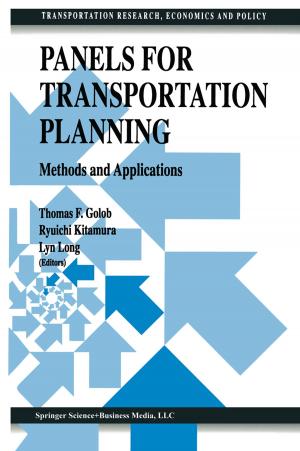Communications and Networking in Education
Learning in a Networked Society
Nonfiction, Computers, Networking & Communications, Hardware, Reference & Language, Education & Teaching, Teaching, Computers & Technology| Author: | ISBN: | 9780387354996 | |
| Publisher: | Springer US | Publication: | April 17, 2013 |
| Imprint: | Springer | Language: | English |
| Author: | |
| ISBN: | 9780387354996 |
| Publisher: | Springer US |
| Publication: | April 17, 2013 |
| Imprint: | Springer |
| Language: | English |
In most schools the dominant supporting technology has been either the stand-alone personal computer or a modest local network. The situation is changing rapidly as a rising number of schools provide access to the Internet for their staff and pupils, opening avenues for communication and networking hitherto not possible.
This book reflects on this change. It aims to further the vision of how these new technologies could improve and transform aspects of education. Yet in parallel it asks serious questions about the realities of an interface between the social, cultural and pedagogical contexts of education and the actual affordances that these new information and communication technologies offer.
The chapters in this book provide a heady mix of foresight and practical reporting, of planning for the future but at the same time respecting the problems education already has with current technologies. The richness of the points presented here stems in part from the range of experience of the international authors - from academics and administrators, to teachers and curriculum designers. This mix ensures that the central questions on communications and networking in education are considered not simply from a variety of personal perspectives, but also from different cultural and environmental experiences. And yet interest also lies in the commonality of reporting and discussion based on activity in the field. All the contributions draw heavily on research and experience in devising and running projects and experimental activities in a range of schools and teacher-training institutions and environments. The opinions expressed are thus grounded in knowledge gained from work embedded in the reality of today's educational settings. This must be the only sound base upon which to consider the issues of the future.
This book is essential reading for all professionals involved in all aspects of information and communication technologies in education. Teachers, lecturers, researchers, students and administrators will find it invaluable.
In most schools the dominant supporting technology has been either the stand-alone personal computer or a modest local network. The situation is changing rapidly as a rising number of schools provide access to the Internet for their staff and pupils, opening avenues for communication and networking hitherto not possible.
This book reflects on this change. It aims to further the vision of how these new technologies could improve and transform aspects of education. Yet in parallel it asks serious questions about the realities of an interface between the social, cultural and pedagogical contexts of education and the actual affordances that these new information and communication technologies offer.
The chapters in this book provide a heady mix of foresight and practical reporting, of planning for the future but at the same time respecting the problems education already has with current technologies. The richness of the points presented here stems in part from the range of experience of the international authors - from academics and administrators, to teachers and curriculum designers. This mix ensures that the central questions on communications and networking in education are considered not simply from a variety of personal perspectives, but also from different cultural and environmental experiences. And yet interest also lies in the commonality of reporting and discussion based on activity in the field. All the contributions draw heavily on research and experience in devising and running projects and experimental activities in a range of schools and teacher-training institutions and environments. The opinions expressed are thus grounded in knowledge gained from work embedded in the reality of today's educational settings. This must be the only sound base upon which to consider the issues of the future.
This book is essential reading for all professionals involved in all aspects of information and communication technologies in education. Teachers, lecturers, researchers, students and administrators will find it invaluable.















